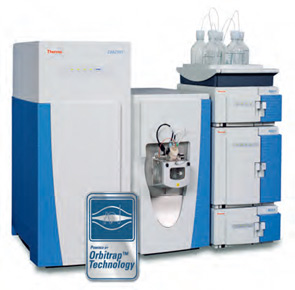This is both good and bad. Other labs rely on public databases, like GenBank; however, the Food and Drug Administration (FDA) does not recognize these sources as valid for compliance testing. Yet, for the moment, species testing with AFT profiles must be done in house. Though Applewhite has been approached by multiple global commercial entities, she has not made this unique data set, or the derived primers, available for fear of reverse engineering. “We were selling it mainly to state agencies for use in their labs, but there’s no way to protect our gene target,” explained Applewhite. Other avenues are being explored, but in the eyes of AFT attorneys, the terms of future licensing opportunities are not yet focused.
Meanwhile, at Eurofins, an international laboratory services company, the seafood unknowns of concern are of a chemical nature, as evidenced by their Pittcon presentation, High Sensitivity Multi-drug Residue Analysis in Seafood by LC-MS/MS: Developing Robust Methods that Meet Industry Regulatory Needs. “We first started developing this line of testing in 2002 when chloramphenicol was discovered in some seafood from Asia,” explained the president and director of Eurofins’ central analytical lab, John Reuther. “As time went on, other agents were found and we continued to develop capability to test for those drugs.”
The challenge came in the form of an ever-lengthening list of drugs to look for.
Right now, the industry typically uses a single-class drug-residue method for identification. “The problem with that approach is that, oftentimes, there are so many different possibilities of drug residues present in a particular species or fish that by the time you get finished running every class of drug, the cost of the job (in time and money) is astronomical,” Reuther said.
Once again, the solution is in the method; available hardware can already do multi-drug analysis. “There’s enough power in currently available instruments,” Reuther said. “The reason why this is an issue is that the methods that have been handed down to date have been centered on class-specific drugs, and no one has taken the approach of trying to make it more efficient.” The novel procedures for multi-class LC-MS/MS developed by Eurofins and reported at Pittcon will, once validated, be freely distributed. “These methods will not be exclusive to a single system,” Reuther assured. “I’m sure they can be adapted.”
The Enemy You Don’t Know
Methods are also on the mind of Vincent Paez, director of food safety business development at Thermo Fisher. “In the past, we were considered instrument vendors, never a lab, and we’ve been trying hard in last three to four years to change that image and to become technical and scientific partners in the industry.”

Witness the recent activity at Thermo Fisher’s Food Safety Response Center in Dreieich, Germany, where two new analytical screening methods to detect petroleum contamination in oysters and fish were developed in response to the 2010 oil spill in the Gulf of Mexico.
Other methods on the drawing board will address the contaminants you may not have thought to consider. “Today, when it comes to analytical instruments, you really need to tell it what to look for—that’s called targeted analysis,” said Paez. “What we will see in the future is non-targeted screening.” As currently imagined, already efficient detection instruments (MS variants) will see all there is to see, identify known species, then call out the unknown but prominent peaks. Beyond this, a technician will track the culprit using data mining.
ACCESS THE FULL VERSION OF THIS ARTICLE
To view this article and gain unlimited access to premium content on the FQ&S website, register for your FREE account. Build your profile and create a personalized experience today! Sign up is easy!
GET STARTED
Already have an account? LOGIN
